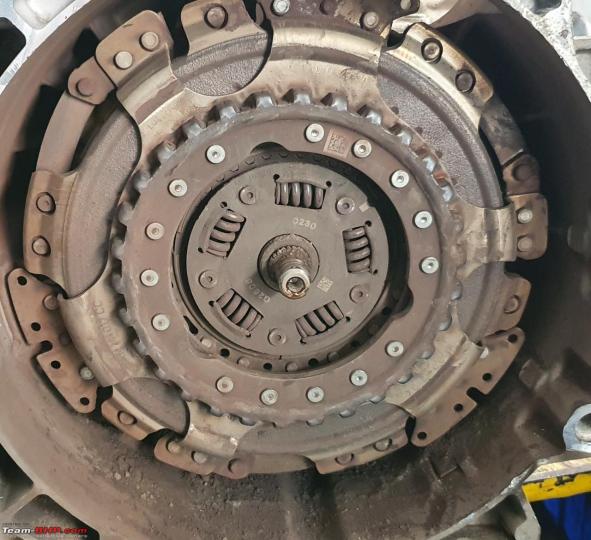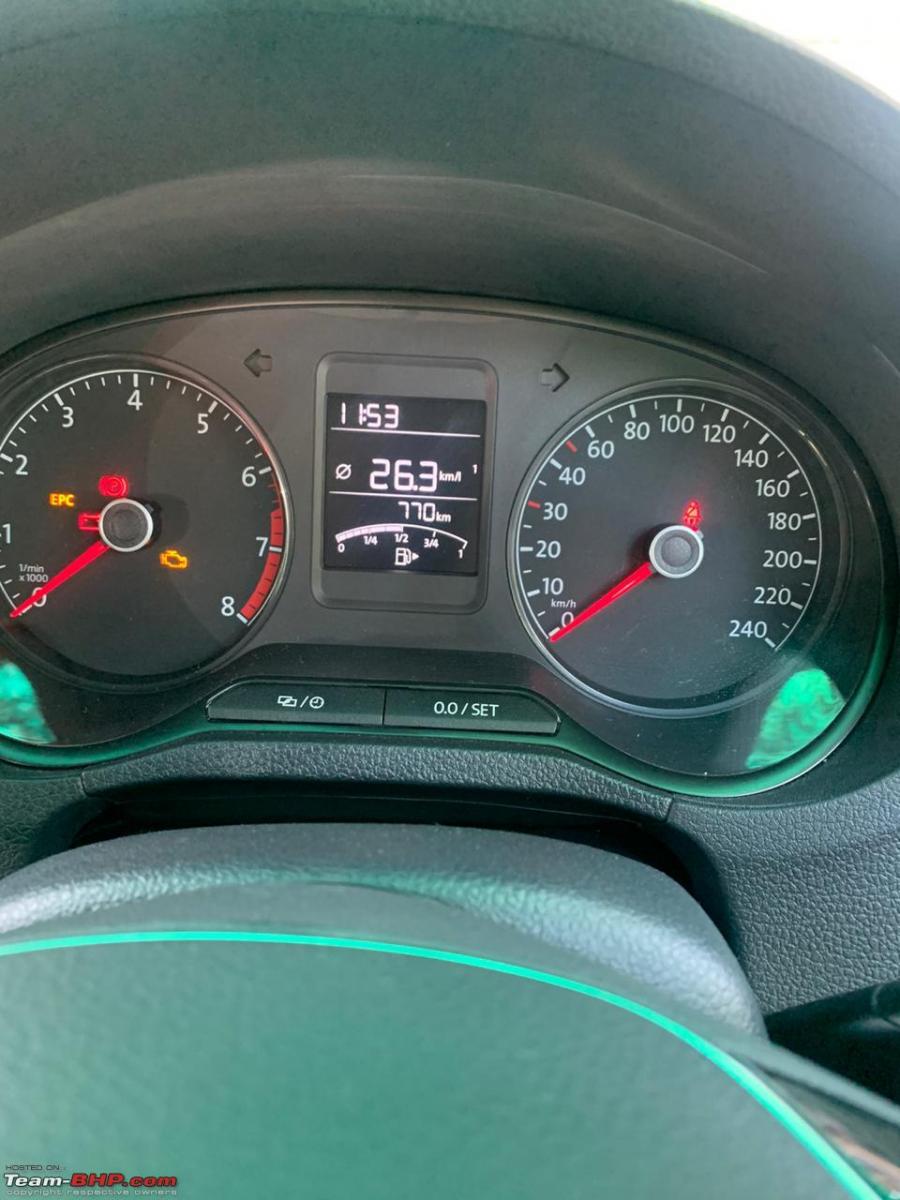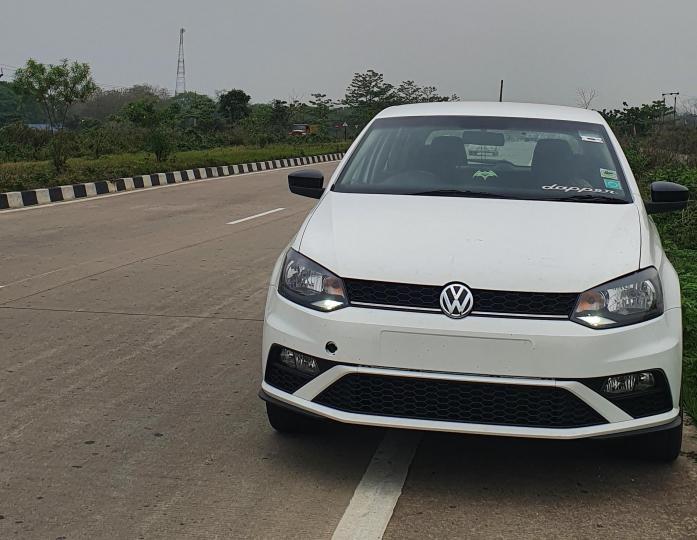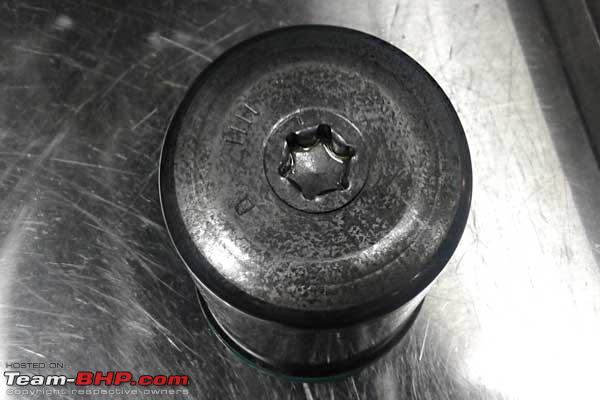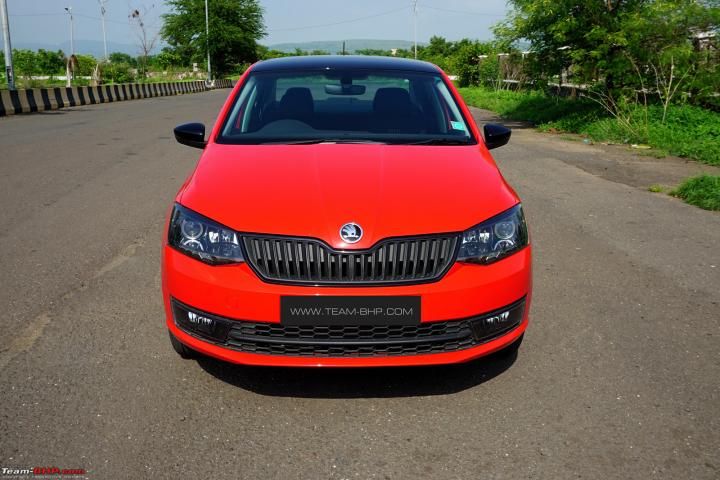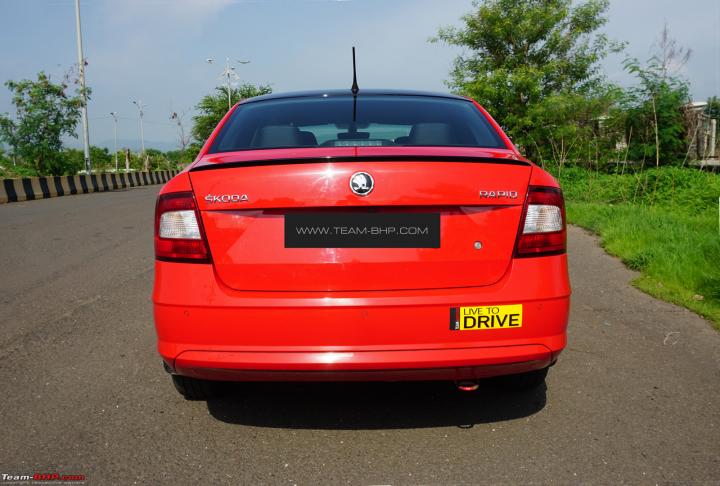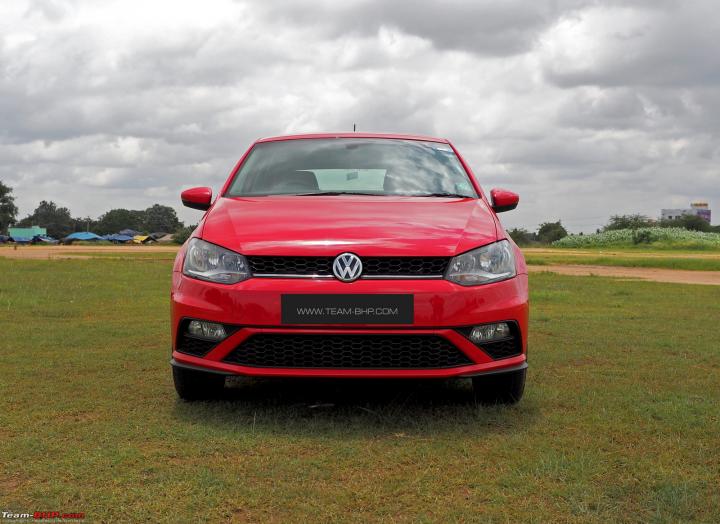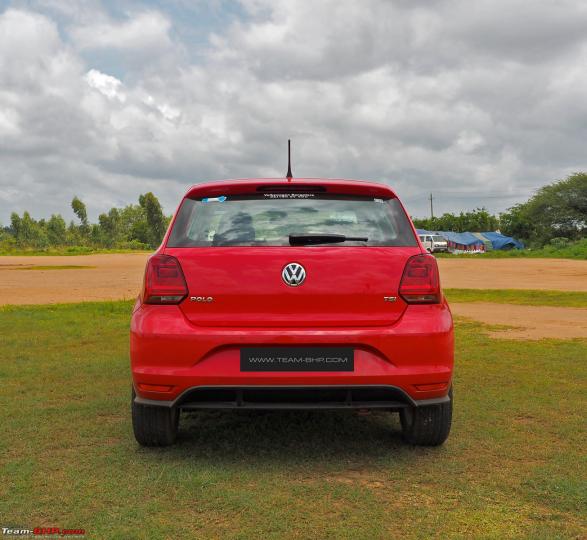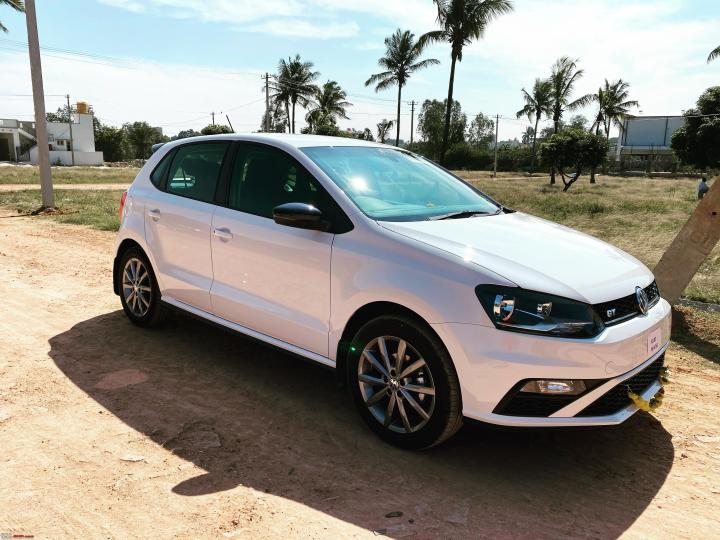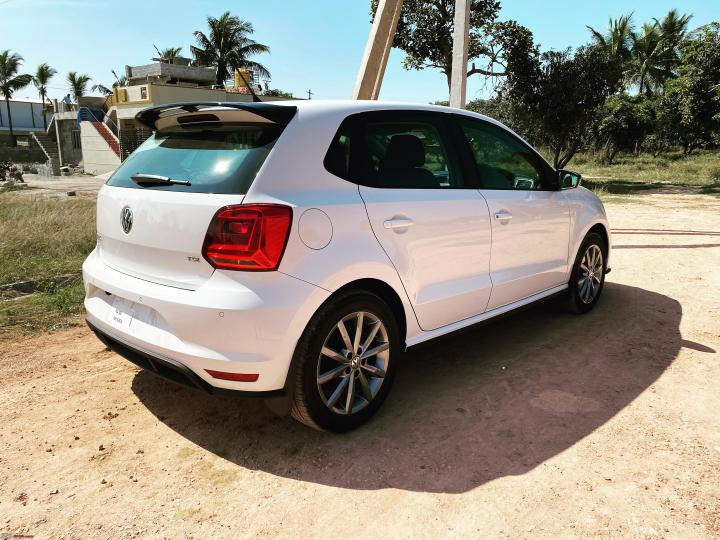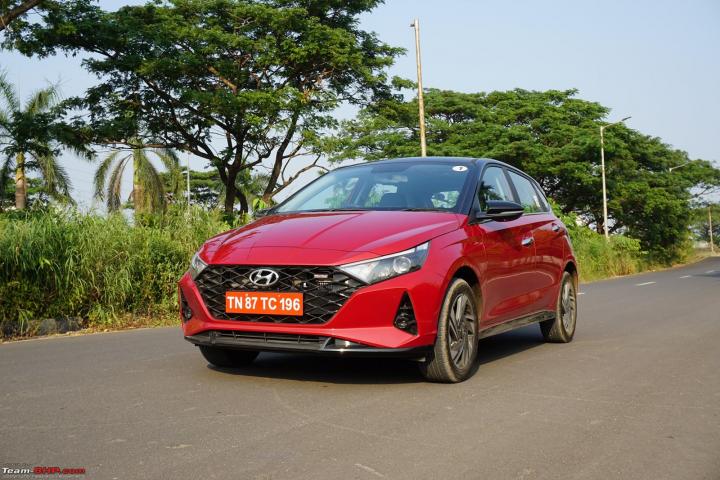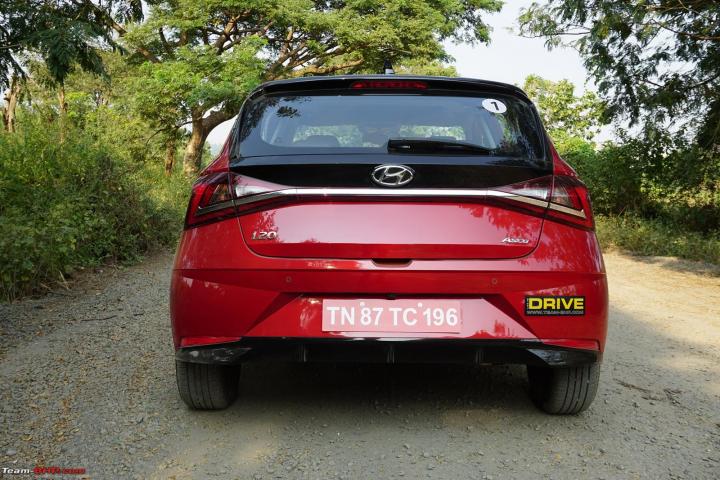News
VW Polo 1.0 TSI - Engine fails, car breakdown, owner helpless
On 09/05/2021, the engine failed and my car has been in the service center since. Within just 7 months time, the engine cylinder apparently failed.
Rajesh KR shares his predicament with us via this page! He is clearly troubled & exasperated due to VW's poor response to this massive failure.

I purchased a VW Polo 1.0L TSI on 15/09/2020. On 09/05/2021, the engine failed and my car has been in the service center since. Within just 7 months time, the engine cylinder apparently failed. This is a serious issue with the new 1.0L TSI engine! The worst news is that, Volkswagen is not taking responsibility on this quality failure. The company's response is pathetic. Since the cars are purchased from the dealer, Volkswagen will never respond to you properly, even for a serious failure like this.
This is my personal opinion = never go for a brand like Volkswagen ever!
Dealer shared this information over the phone = one of the cylinders has gone bad. They are suspecting the head having some problem. Instead of ordering the complete head, they have ordered for the defective springs and a few other items. Cost factor!!! Spares are not available in the factory and we're waiting for the dispatch information. Nobody knows when it will come.
Dealer is willing to replace the parts under warranty. But my concern is, how can I trust this engine anymore??? I don’t know how & when it will get repaired. No assurance from the dealer either. Why is VW / the dealer not replacing the complete head/engine.
It is just a 7 month old vehicle and run for 25000 km. I'm worried about the quality of this new 1.0 TSI engine and the pathetic response from Volkswagen to an engine failure.

Check out BHPian comments for more insights and information.
News
DSG Fix: Multiclutch replacement of DQ200 on a VW Polo GT TSI
The amount of money I could have saved by not servicing/maintaining the vehicle at VW would have almost bought me my multiclutch and flywheel. What really bugs me is that the whole purpose of wanting warranty was in the eventuality of a multiclutch failure and VW has acted pretty shamefully about the whole ordeal. If there is no support for someone who has followed the service regime to the T, what is the average Joe to expect?
BHPian Viraat13 recently shared this with other enthusiasts.
For those of you not in the know, you can get the background on my ownership review.

The gearbox out, at the VW workshop where the diagnosis was confirmed to be the clutch pack. (Note the debris of the worn out clutch all within the bellhousing.)
Anyway, the short version is that:
- The multiclutch was cooked @ 58k kms
- I was getting appalling goodwill warranty
- And VW wanted me to pay them 1L for this job after including their pittance of a gesture of goodwill warranty
Warranty was a huge waste of time and money. The amount of money I could have saved by not servicing/maintaining the vehicle at VW would have almost bought me my multiclutch and flywheel. What really bugs me is that the whole purpose of wanting warranty was in the eventuality of a multiclutch failure and VW has acted pretty shamefully about the whole ordeal. If there is no support for someone who has followed the service regime to the T, what is the average Joe to expect?
At this point, I was frankly quite fed up of them and decided to go ahead and change the clutch on my own. I asked my mechanic about it, and he said he hasn't done a DQ200 before, and none of his mechanic friends had any experience of it either. Yet, I was still determined, so I went ahead and did my own research on how to change the multiclutch/clutch pack of the 7-speed DQ200. I found many helpful videos (not a single one had complete info), went into n number of pages of the Google search result, and felt confident that I could do the job without worrying about it. All this research was over the 45 day lockdown, and the day it was lifted I went and bought the Luk repair kit.
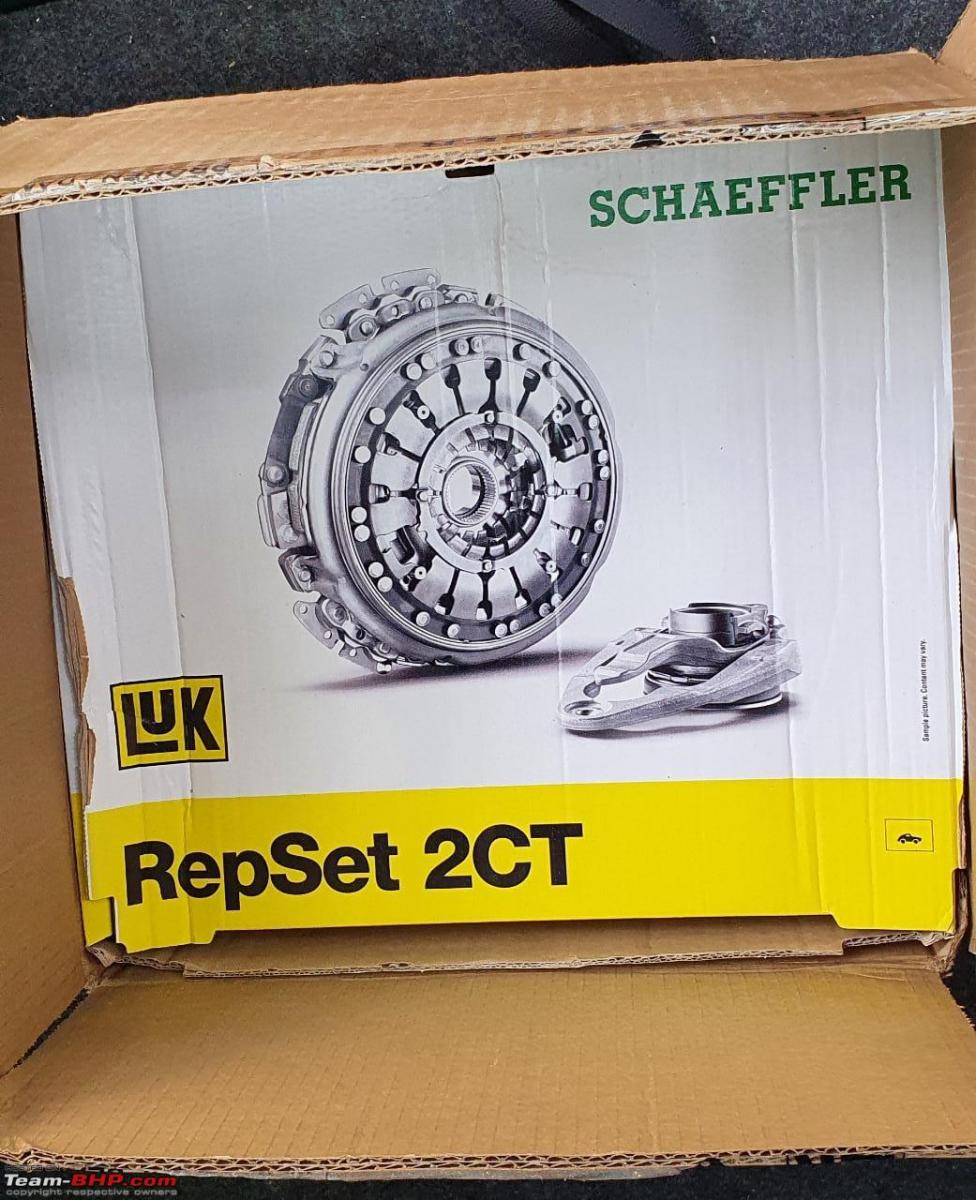
Luk is the OEM supplier for this part as evidenced by the OE clutch of my Polo. Closeup shows the faint LUK stamping on the dual clutch.

The same day was dedicated to removing the fittings and the gearbox itself. The temperatures in Delhi are soaring this week at it was probably 40 degrees in the shade all throughout this project.
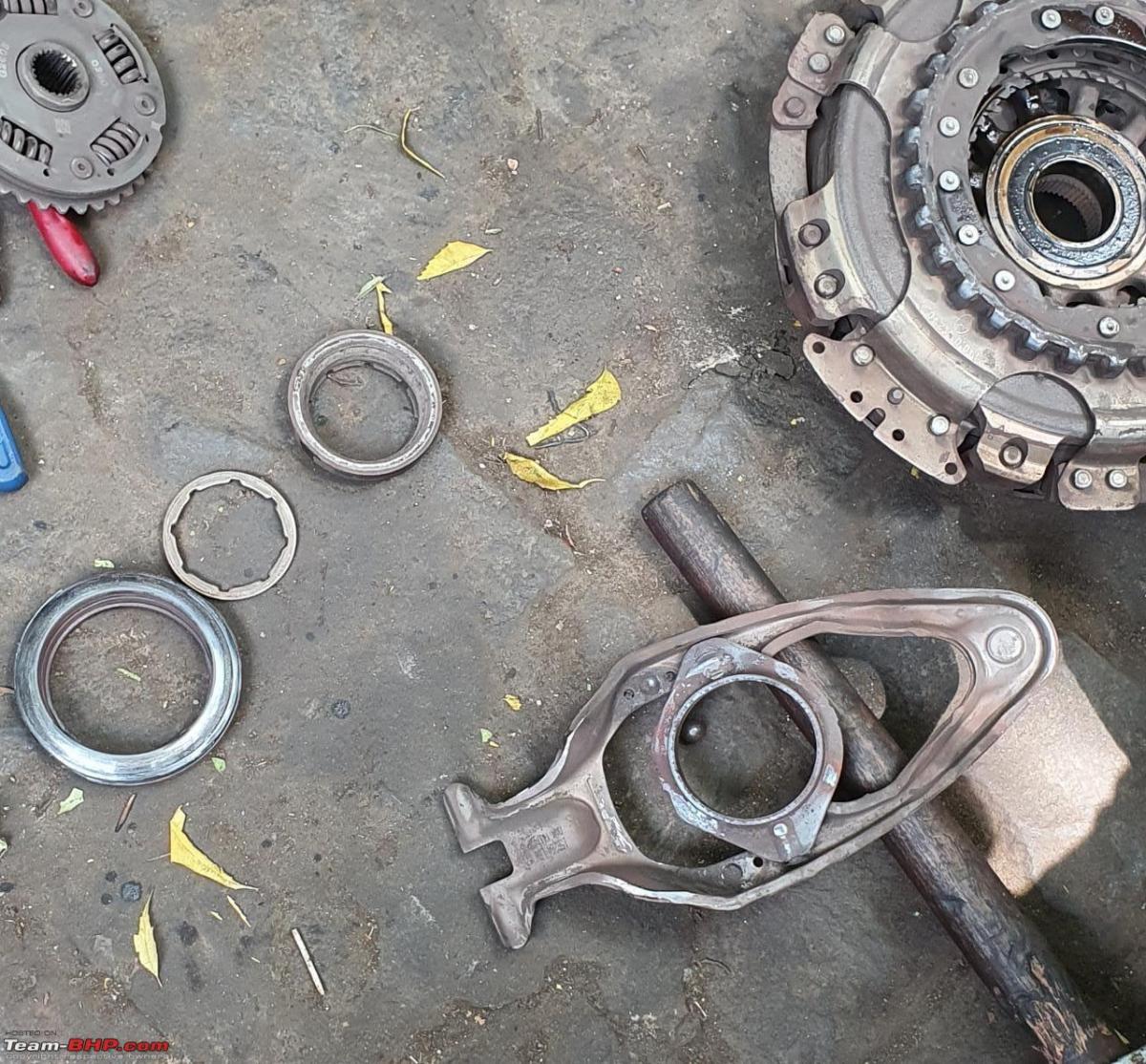
The various bits of the clutchpack removed.
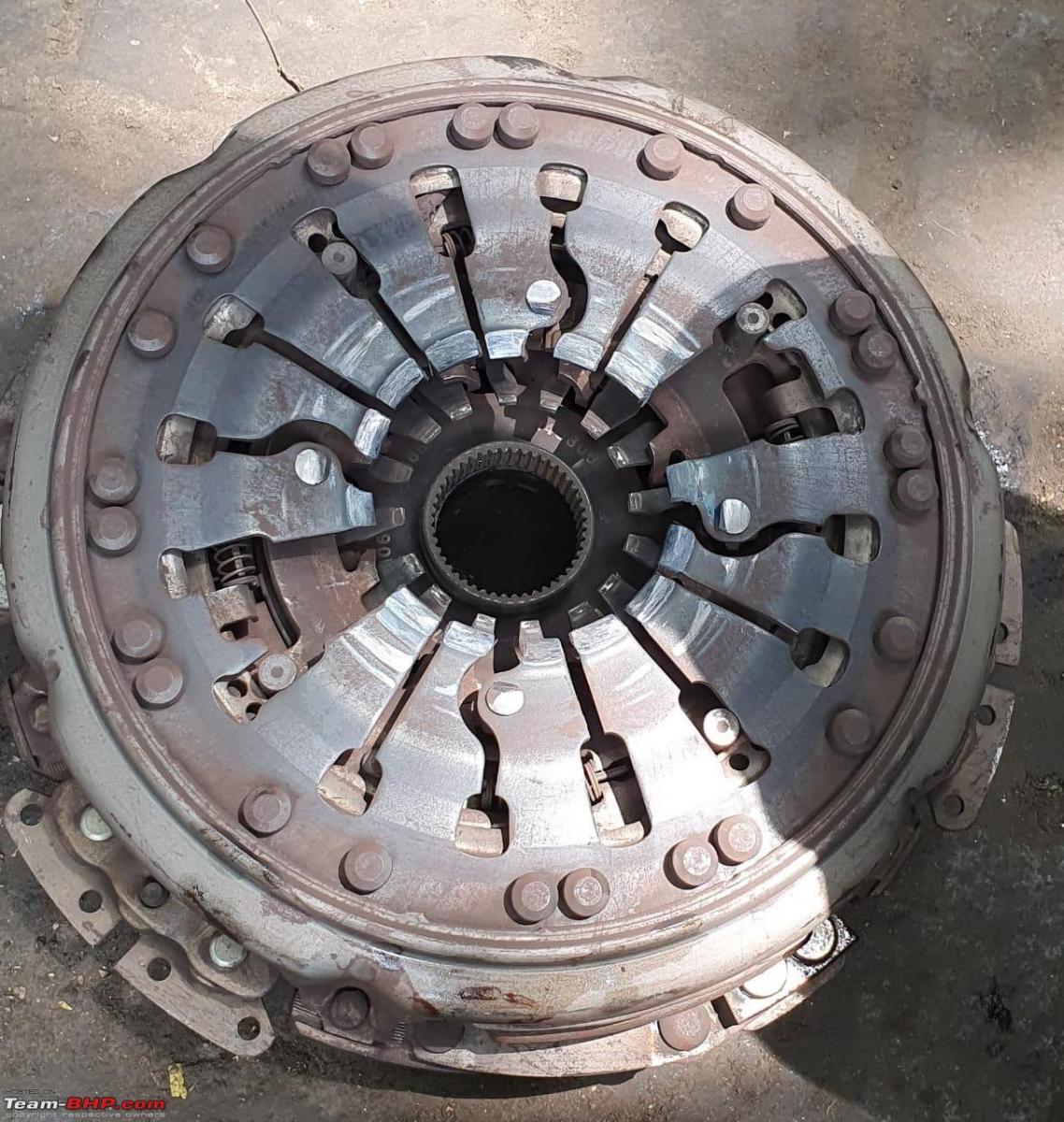
The worn out fingers of the clutch.

Huge amount of debris in the bellhousing. The temps must have been pretty high in the GB because one of the shifter forks has plastic supports for a bearing, and that was not there on the fork that was removed!
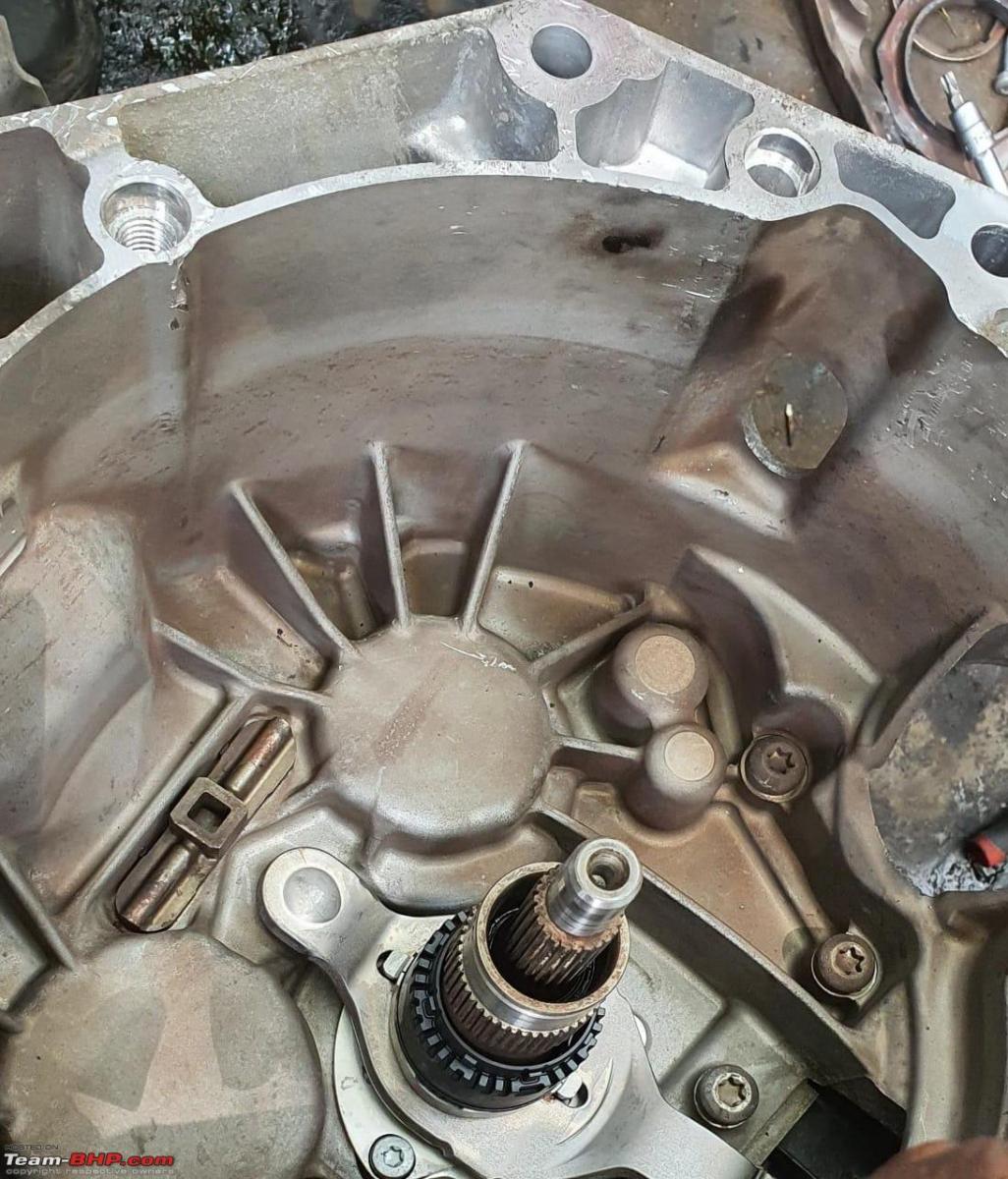
The housing after it had been cleaned up with compressed air, and then washed with petrol and a small brush. In this, the small fork and bearing have been installed already.

The forks in place, and the splines of the input shaft have been greased. The shims were measured using a vernier caliper and then placed for their respective bearings.
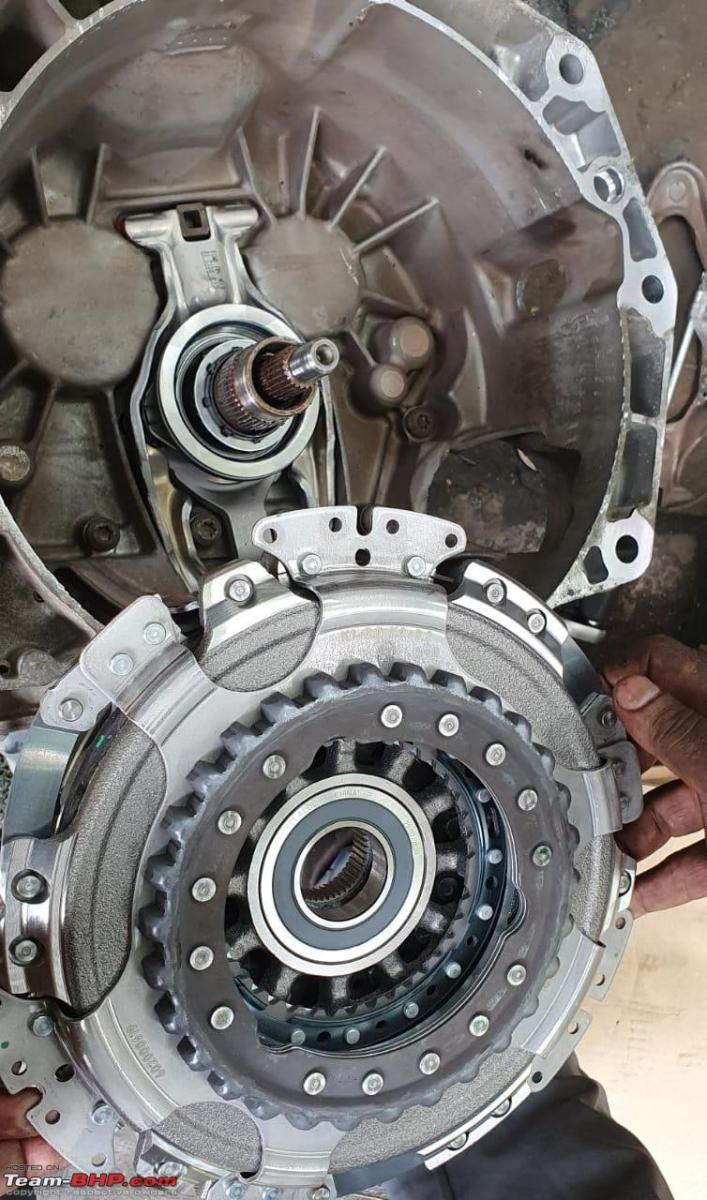
The clutch pack ready to go in!

And installed! I missed a few pictures at this point because I was too involved in the installation, but basically the clutch needs to be pressed in for the locking ring to snap into place, and after that the clutch hub needs to be aligned with the markings on the clutch and pressed into place and secured using a locking ring.

Pretty black for something that's supposedly sealed for life. Not sure what the term means though, since there is no definition of life - is it the till the transmission breaks? Is it till the end of time?
None of the guides mentioned that the gear oil will leak out through the breather cap, and I didn't think to drain the oil before. So most of it leaked out onto the ground (can be seen in some photos). This is a special gear oil for the DQ200, so I had to get it via countersale at VW itself. The capacity is 1.9 litres and needs to be filled from the breather port.
Note: this transmission has two oils, one for the gearbox and one of the mechatronic. I also went ahead and topped up the mechatronic fluid, luckily I managed to find the right fluid in the aftermarket.
Continue reading the DSG fix and BHPian comments for more insights and information.
News
Real-world fuel efficiency of the Volkswagen Polo 1.0L TSI
This was also the first long trip that I left home with a little over half tank of fuel, but I made it home in the same tank! Not once did I have to drive extremely gently to achieve this mileage, and not once did I hesitate to have fun and push this car hard.
BHPians AJ18, fluidicjoy, arshad_98, deepfusion, TSI47, Endless...., and sudeep.pandya recently shared this with other enthusiasts.
AJ18 shared his initial experience with his Reflex Silver 1.0L TSI MT during the run-in period:
Fuel efficiency in the city until now has been an average of 9 kmpl. This is with moderate traffic. On the highway, I was getting an average of 12 kmpl.
fluidicjoy shared an update when his Highline+ Automatic reached 1,700 km:
I have been really happy with the Fuel Efficiency, considering how quick this car is. 10.8km/l on a consistent basis on city drives in Pune's average traffic is really good considering the 1.2L i10 Auto barely manages 8-9km/l. On highways though, the 09G's 5th and 6th gears ensure a healthy double digit mileage which doesn't dip too much even if you push this drivetrain hard. On my trips to Ahmednagar, could manage a healthy 15-16km/l which is really good considering this is a Turbo charged petrol engine.
He also shared an update when the car reached 3,000 km:
I truly loved the performance of the TSI Engine on this trip, both to and fro, and the car returned a healthy mileage of near 14km/l on my 8 hour 12 minute drive. This was also the first long trip that I left home with a little over half tank of fuel, but I made it home in the same tank! Not once did I have to drive extremely gently to achieve this mileage, and not once did I hesitate to have fun and push this car hard.
arshad_98 reported the mileage his Highline+ MT gave during the first 32 days and 990 km of ownership:
During this drive, the car gave a mileage of 17.7 kmpl as per the odo, but when we calculated it manually, it was around 16.3 kmpl. The SA had already told us that there would be a slight variation in the MID reading and the original figures.
deepfusion reported this after a 83 km round trip:
Wow, this is plain amazing. 26.3 kmpl for an 83 kms round trip to VW west Delhi.
TSI47 shares the figures his 1.0L TSI MT returned:
If anyone is wondering how much mileage the Polo TSI can give in the city with some sedate driving (occasionally ) below image might help:
But I have noticed that even if it is pushed a lot, it doesn't drop below 10.5-11 kmpl.
After a 900 km road trip over 2 days, Endless.... had this to report:
Almost forgot about touching upon the mileage figures that some of us here may be interested in. Short story, 12.7 kmpl for day 1, 550 kms. Long story, I drove with a lead foot for close to 200 kms. Average dropped to 10 kmpl. The next 2 legs were done sedately, maintaining respectable highway speeds and hence the incremental increase in mileage. I’ve never had to refuel doing this route in the past but this time, I did stop once for fuel. Range is about 450 kms on a full tank with a mix of spirited and sedate driving. I am sure another 50 to 80 kms can be wrung out of this motor, easily.
The next days driving, post inspection/service at VW, avg mileage has improved. Got 14 kmpl. This has a lot to do with me settling down from the initial euphoria rather than any tweaks at the service center. They did however mention that existing customers get over 16 kmpl on highway runs. I believe them. It’s possible, if you have un-imaginable amounts of will power to resist them prancing ponies under the hood.
Check out BHPian comments for more insights and information.
- Tags:
- Indian
- Polo TSI
- Polo
- Fuel Economy
News
Lockdown DIY updates to a Volkswagen Polo GT TSI
Forum members who are familiar with my car know my passion for DIYs. It has been over two years now, and my confidence to take up and execute DIYs has grown, as has my tool collection.
BHPian TheLizardKing recently shared this with other enthusiasts.
Forum members who are familiar with my car know my passion for DIYs. It has been over two years now, and my confidence to take up and execute DIYs has grown, as has my tool collection.
Amid the ongoing lockdown, I decided to clear my DIY pipeline and complete some projects that have been pending for a long time. I have started this thread to describe these projects:
- Boot illumination (already covered here in my ownership thread)
- Lock/unlock switch on passenger side
- Courtesy lights on door panels
- Puddle lamps under ORVMs
Lock/unlock switch on passenger side

Whenever my wife and I are out at night and I need to step out of the car for some reason (e.g. withdraw money from the ATM), I always insist for safety reasons that my wife lock the car. It is neither easy nor convenient for her to unbuckle the seat belt and lean over to the driver's side to do so, and she has to do it twice.
The British forum UK POLOS has been a source of many DIY ideas for me, and that is where I found the solution to my problem. I used this post on user ciclo's thread as a reference for this DIY. It has all the required information, so I am not reproducing the same here.
Parts required
- Connector 1K0972704G x1 (purchased on Boodmo)
- Terminals 000 979 009 E x4 (purchased on AliExpress)
- Door handle cover 6R0867171K82V x1 (not purchased, read below)
- Door handle 6R0867179JTLL x1 (purchased used on eBay)
- Lock/unlock switch 6R1962125AREH x1 (purchased used on eBay)
Materials required:
0.5 mm2 wire, since the terminals (item no. 2 above) are very small and do not accept 1 mm2 wire.
I planned to reuse the stock door handle cover and hence did not purchase item no. 3, only to realize at the last moment that the locking tabs on the stock door handle cover do not match those on item no. 4.

I recovered from this setback by resorting to jugaad and plugging the hole in the door handle cover that had come with item no. 4.
Courtesy lights on door panels
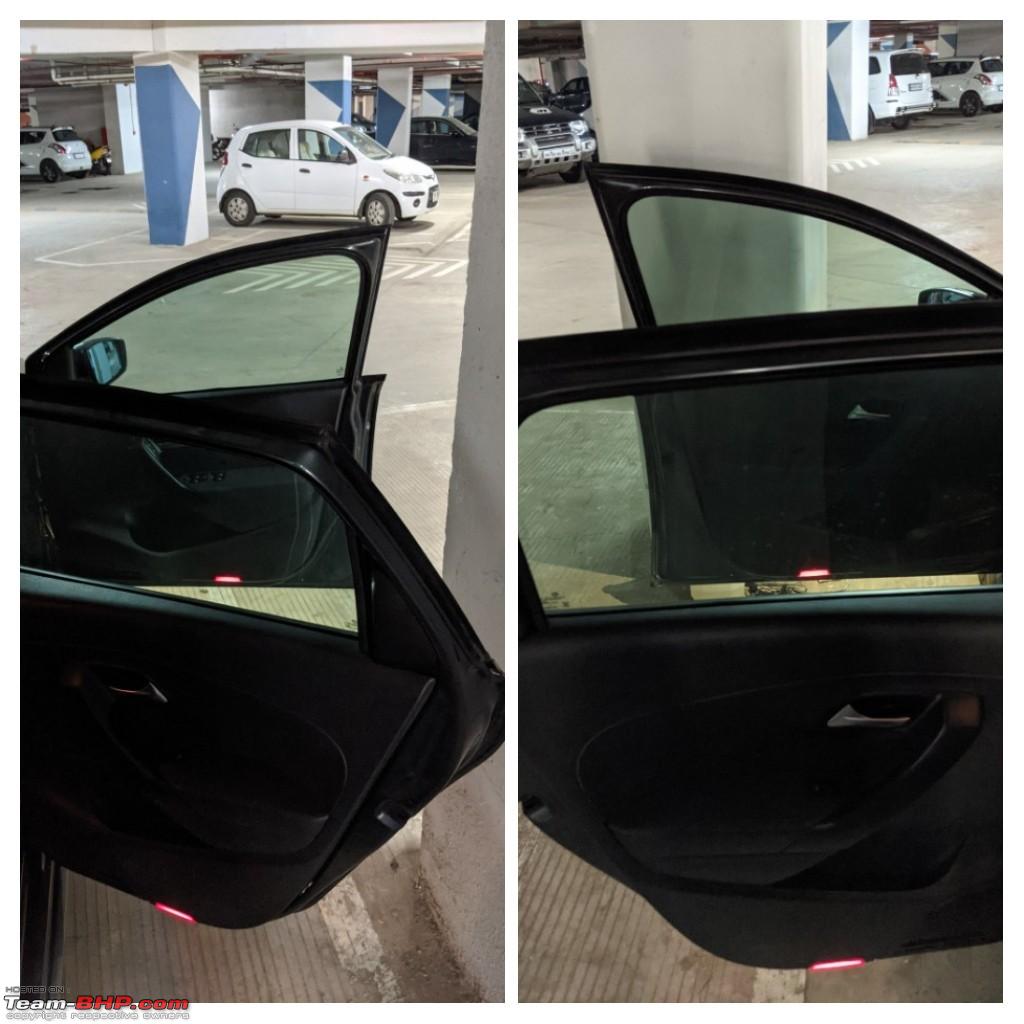
I am a big fan of lights, because I find that they really up the premium quotient of the car. A common feature in high-end cars is the courtesy lights in the door panels. In the VW family, this feature is available in the Jetta and higher segment cars. So sometime in 2019, when I saw this post by user Benzinkopf on the UK POLOS forum, I immediately knew that I wanted these in my car too.
I reached out to Benzinkopf, and he was more than happy to help. His real name is Amir, and he is from Malaysia. We have kept in touch ever since, and I find it very helpful to bounce ideas off him. He is a 3D printing expert, and keeps designing and printing small parts for his DIYs.




The way Amir has done it, it requires a hole to be cut in the door panel. A 3D printed bracket specially designed to hold the courtesy light unit (part number 3GD 947 411, purchased on AliExpress) is then fitted into the hole. I took the electrical connections from inside the door panel itself.
Puddle lamps under ORVMs
This DIY was again inspired by Gannu_1. Here is the post on his ownership thread.
I sourced the LEDs from the same vendor as Gannu, but I purchased the Premium Stainless Steel (3W) version in warm white. I have powered them using the supply for the footwell lights.
Check out BHPian comments for more insights and information.
- Tags:
- Indian
- DIY
- Polo GT TSI
- Polo
News
Want to turbocharge a Volkswagen Polo's 1.2L NA engine
If this project is completed, it'll be one of kind. No Polo has a turbo 1.2L engine with a manual gearbox.
BHPian Gorkey recently shared this with other enthusiasts.
I am from Assam and I have a 1.2L NA Volkswagen Polo which is over 7 years old and has done over 1 lakh km. I want to turbocharge that engine, no matter the cost. Also the scope of turbo'ing my engine in Assam is very limited, so what do you suggest? Should I go to Kolkata or another metropolitan city to get modification done or let the engine stay NA and enjoy it as it is. I plan to keep this car forever in my garage. And I desperately want to turbo it. Please help. If there's a turbo petrol Swift, why there can't be a custom turbo petrol 1.2L manual Polo? If this project is completed, it'll be one of kind. No Polo has a turbo 1.2L engine with a manual gearbox.
Here's what GTO had to say on the matter:
Don't waste your time with tuner headaches, unreliability & breakdowns. Time is money. Simplest solution = sell your 1-lakh km Polo and buy a used Polo 1.6 TDI / 1.2 TSI / 1.5 TDI or even better, the new 1.0 turbo TSI and redline away in the sunset.
Since the scope is limited in Assam, its all the more reason you should stick to a reliable, factory setup. Remember, factory horses are factory horses. Some of us learnt this the hard way.
Here's what BHPian TrackDay had to say on the matter:
I too would take GTO's advice. Maybe it is time you looked at a new car if you want something more exciting to drive. It is better to get these kind of works done if you have the time and energy for it. Also it would be beneficial if you knew someone or place nearby to where you reside. If this is a project car, and you have other cars in your garage, do go ahead. However if this is your only ride, think twice.
You have to take the following factors too into consideration when you do works like these such as strain on the engines & mileage. Consider other options instead of adding the turbocharger. I am not that familiar with remapping, but others can comment if that can bring a little more joy into this Polo. Other small additions like an exhaust upgrade, air filter and suspension with better tyres can make the car a bit better.
Here's what BHPian ssjr0498 had to say on the matter:
It sounds exciting and I am sure you could take it up as a project.
Historically this has been a road that people with no basic knowledge shouldn't travel on. But, in the recent decade or so, the availability of parts and the knowledge of how to go about doing these things is now widely available, making this not that big a mountain to climb!
Going turbo is not a biggie, apart from the money. IMO, what you need to do first is to think what is the objective of turbo charging your car?
- Do you want to turbo it for simply bragging rights i.e, xyz bhp/whp, world's first, full custom this, custom that or some nasa tech and all that jazz
- Drag queen!
- Daily driver with good power/torque with reliability.
When you decide on the above, then go about doing your research on the parts!
If I were you, I would look at the nearest cousin, the 1L TSI, and try and see if the placements of the turbo charger, intercooler etc. and eyeball to understand if they would fit onto your car or not and start the journey from thereon.
However, from personal experience, whenever you start such a project and plan on doing it yourself, expect certain things to fail! But then, failure is the pillar of success and you could either 1. fail and give up or 2. fail, try again and succeed.
Check out BHPian comments for more insights and information.
News
Volkswagen Polo Comfortline AT launched at Rs. 8.51 lakh
The Polo Comforline AT variant costs Rs. 1.09 lakh less than the Highline AT trim.
Volkswagen is now offering the 6-speed automatic transmission in Comfortline variant of the Polo. This variant is priced at Rs. 8.51 lakh (ex-showroom, India).
The Polo is powered by a 1.0-litre, turbo-petrol engine that puts out 109 BHP and 175 Nm. The engine is mated to a 6-speed automatic transmission. It's the same torque converter automatic that is available in the Highline trim. This variant costs Rs. 9.60 lakh (ex-showroom, India).
The Comfortline variant comes with features such as automatic climate control and a 7.0-inch Blaupunkt audio system.
The Polo Comfortline AT is available in five colour options - Flash Red, Sunset Red, Candy White, Reflex Silver and Carbon Steel.
- Tags:
- Indian
- Polo
- Automatic Transmission
News
Yet another DQ200 gearbox failure in a Volkswagen Polo GT TSI
In fact, I have been getting symptoms of my gear box failure since the last 2 years.
BHPian petrol_power recently shared this with other enthusiasts.
Mine is a 2015 November registered Polo GT TSI and my extended / add-on warranty expired in 2020 November. I had tried to take extended warranty at that time, but VW denied it stating that mine was already on add-on warranty and any further extension is not possible. And last week, my car stalled while running. And the diagnosis is gearbox failure and mechatronics failure. Total estimate is 201,280/-.
Initially, the dealer said lot of rust is accumulated in the gearbox and it has crumbled down and said that mine is flood affected car, as that’s the only way rusting can happen in so many inside parts. I assured that it is not flood affected as he can confirm it with the service history.
In fact, I have been getting symptoms of my gear box failure since the last 2 years (ie when the car turned 3). There was a lag in movement when I shift the gear from P to N to D, it wont move for 5 to 10 seconds, which increased to upto 1 minute. This was random occurrence which finally became routine one, but service centre said that since the error is not showing when they scan it, VW is not supporting to change the gear box.
I hope they support me with goodwill warranty, as I was looking to add another car to my garage and was looking for the launch of new Octavia and new Tiguan. If they don’t support, I won’t make the same mistake again, whatever gear box they use in them. Once bitten twice shy.
I have sent mail to VW customer care. I had contacted VW customer care earlier for many issues and that has never yielded any output. I guess the only option is by trying to get in touch with some senior officials like Head Service Vishal Bhat or equivalent executives.
Requesting support from BHPians if any one has the contact mail ID of higher officials of VW India or VW Global as I need to escalate it to them. Kindly DM me please. Dealer is not able to do anything.
Here's what BHPian drpudhi had to say on the matter:
Sorry to say this, but welcome to the club. I think it's one eventuality that's waiting to happen if you own a DQ200 gearbox, sooner or later. I would advise you to take the gearbox rust with a bucket of salt. From my experience, they are not trained enough to open the sealed box, let alone find rust within. Ask for photos of the rust if they are adamant. Coming to goodwill warranty, you're completely at the mercy of ASS and VW. Try to make some noise and hope for the best. And, I hope you don't have any major mods in your car and a spotless service history, which can be reasons they will try to deny warranty. Also, the quote they are saying is simply stupid. That itself raises lot of suspicion on their intentions. The mechatronics costs around 71k MRP. How do I know this is? I paid for it while mine gave up. (You can find my entire experience in the GT TSI official review thread). Have attached the MRP on box of mechatronics that I got. Hope it works out in your favour.
Here's what BHPian AMG Power had to say on the matter:
I have mentioned this earlier - DSG gearboxes have an unofficial unlimited warranty and goodwill warranties will be honored within VW / Skoda subject to certain conditions. This fact is not indicated to customers. Some of the conditions that you need to have complied with are:
- Adherence to service schedules
- Avoiding any modications that could affect the gearbox - remap, Power increases through exhaust modifications and the like.
- Should not have serviced the car outside the ASS resulting in issues
- No non OE parts fixed on the car.
You should put across your case properly, provide documentation and escalate the issue within VW as required. DO NOT reach out to the CEO or the VW group Chairman straightaway as some over enthusiastic folks do. Take advantage of every level of escalation - if you are not happy with the solution provided at a particular level reach out to the next - that will help you more than reaching out to the top straightaway.
Here's what BHPian vishy76 had to say on the matter:
This is a common occurrence on the DQ200. Mechatronics failures and premature clutch pack wear outs are both commonly heard of as you mentioned, and whoever buys these cars on the pretext that both will be reliable is a fool IMO.
The best course of action is what you have done. Asking for goodwill warranty. Mechatronics replacements are approved and 100 percent of the cost is usually covered by VW, but clutch pack failures after the car has turned 4-5 years old are considered wear and tear items and depending on your luck, you can get anywhere between 20-50 percent goodwill coverage or even none. Best is to set aside 1.3-1.5L should the worst happen and keep fingers crossed. Could you shed light on what exactly is being replaced and the cost breakup? The gearbox body usually doesn't need replacement. It's the mechatronics or the clutch pack and flywheel or all three.
Coming to the reason for failure, the mechatronics in the DQ200 has a high pressure accumulator. What this basically does is generate a very high amount of pressure in the mechatronics fluid (upto 60 bars) in a very short period of time once the ignition is switched on. This accumulator with time, wears out. The internal seats abrade and cause the oil to get contaminated with metallic particles. Initial symptoms include mis-shifting and delays as the fluid pressure inside the mechatronics isn't enough for the solenoids due to the bad accumulator. Eventually, the contaminated oil ends up destroying the solenoids as well leading to no drive to the wheels or only odd or even gears being available.
Here's are pics of the accumulator:
Attached to the valve body:
The internal seats that wear out with time:
Repair kits are offered abroad and specialists also overhaul the gearbox for a fraction of the amount of a new one. But such specialists are far and few to non existent in this part of the world. VW also doesn't allow the oil in the mechatronics to be replaced by any dealership and claims such an action should only be carried out if the unit malfunctions (in India, it's replaced directly in case of a malfunction).
Check out BHPian comments for more insights and information.
News
DIY: Changing brake pads on my Volkswagen Polo GT TDI
Plans of getting the remaining part for the big-brake kit for the front wheels have been put on the back burner at the moment.
BHPian Gannu_1 recently shared this with other enthusiasts.
Since I have been doing WFH over the last week, I thought of dropping an update in the thread.
Plans of getting the remaining part for the big-brake kit for the front wheels have been put on the back burner at the moment owing to:
- The current covid scene and soaring fuel prices which has reduced the long-distance drives considerably.
- My friend who's in Germany, who was to travel to India during this summer carrying the remaining parts with him, has postponed the travel plans due to the lockdowns.
- Financial constraints! The caliper and the brackets would set me back by close to 25-30k INR.
- No urgency for this upgrade at the moment with just the home - workplace - home 12 km daily drives. My role at work has also changed a bit due to a new order that has come so less of shipyard commutes too.
A couple of weeks back, during a casual inspection of the existing front brake pads, I found them worn out by a sizeable margin. Just a few mm of the frictional material was left on the outside.

I was pretty sure these are not going to last until the new callipers and calliper brackets of the big-brake kit arrives so I decided to swap the existing pads with a new set. I am not much of an enthusiastic driver and my brakes are very sensibly used, so an OEM replacement set would do just fine. To keep that in perspective, the current set has last me over 93,000 km. They were replaced during the scheduled fifth/75,000 km service and the car is now at 167,700 km.
I’ve had a good experience with Boodmo thus far so decided to source the pads through them. A set of TVS-Girling pads was priced at a shade less than Rs. 1500 in Boodmo (part number - 29932547, link). The same set with the additional sliding clips and bolts which makes up the OEM brake pad replacement kit retails for Rs 1800 (part number - 6RU698151A, link). I decided to opt for the TVS-Girling set while retaining the sliding clips and bolts. Plus, I wanted to change the pads myself having seen a few DIY videos and links on changing brake pads on the forum. But I did not realise what I would be getting into and some lessons will be learnt that day!
The pads were shipped through Delhivery and they arrived as scheduled. From order placement to delivery it took about a week.

I decided to change the pads on a weekend and assembled all the tools required for the job. I also wanted a pair of helping hands for the job so I roped in my good friend and colleague - Gagan. He isn’t new to this thread though. He was the friend who lugged the Bilstein kit from Germany during his Euro trip and we had been to Yercaud for a leisure trip back in 2016. He's very fond of cars, have been an active member and judge of the Formula Student competition held in India and abroad and currently owns a 2016 Jazz.
The apartment complex where I stay doesn’t have many open parking spots with a shade so we had to pick an open space and do the job. Times I wish I had a closed garage with a nice epoxy flooring, a hydraulic lift to raise the car, an air compressor, tool cupboards and such like BHPian Jeroen’s garage. One day perhaps!
List of tools/consumables
1. Jack (I used a Maruti’s screw jack as it was easier and much safer to operate this rather than the VW supplied jack).
2. A pair of jack stands
3. ¼” ratchet set or a 12-13 ring spanner (to undo the calliper bolts from the guide pins)
4. Wire brush (to clean the callipers from the brake dust and rust)
5. C-clamp 120 mm or 6 inch OR a flat-head screwdriver (to compress the calliper piston back)
6. S-type hooks (to hang the calliper from the spring after it is removed from the assembly)
7. Sand papers 220 grit (wasn’t used as the wire brush helped remove all the brake dust and rust)
8. Brake grease (to be applied in the sliding clips, guide pins and the rear side of the pads)
9. Brake cleaner spray (alcohol-based spray to clean the assembly from the brake dust and rust)
10. WD40 (for general cleaning and stripping the older grease)
11. Paint brush, discarded toothbrush (for hard to reach areas)
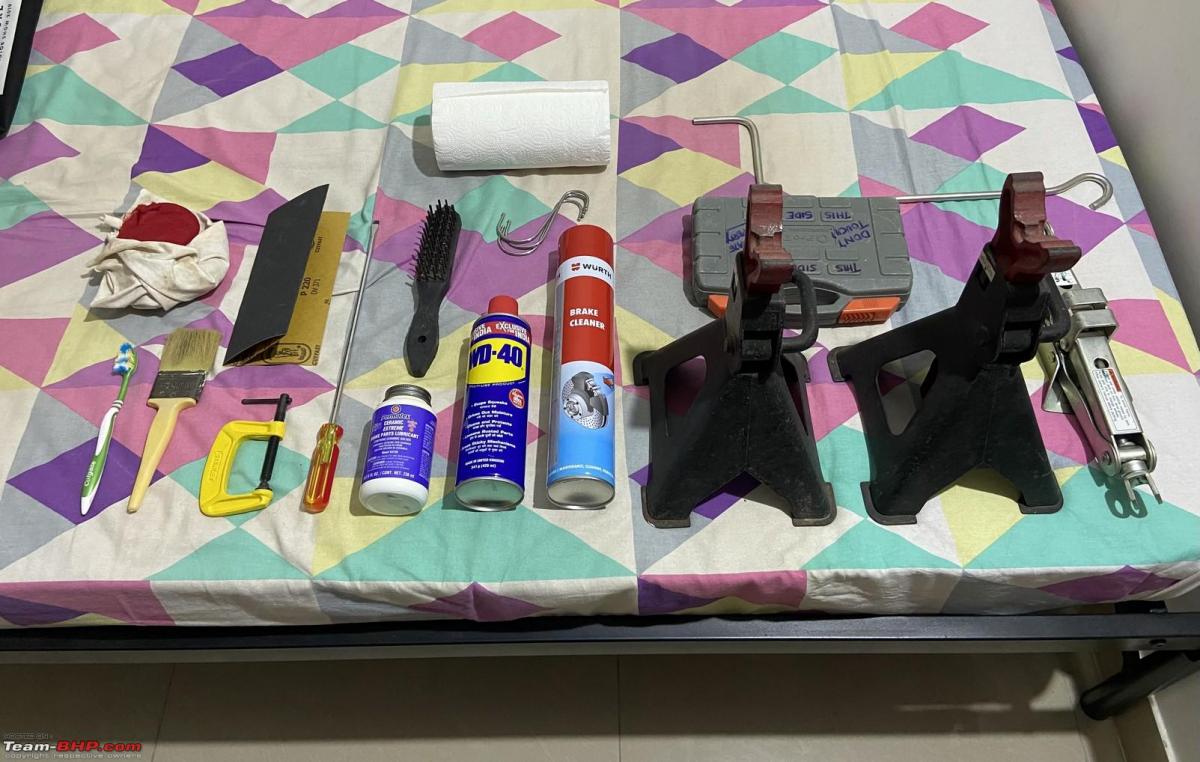
Took all the tools to the car parked in the basement and drove her out to an empty spot.
Steps
1. Slacken the lugs of the front wheels.
2. Jack up the front wheels and place the jack stands at the strong points.
3. Remove one of the front wheels - we started with the driver-side wheel first.
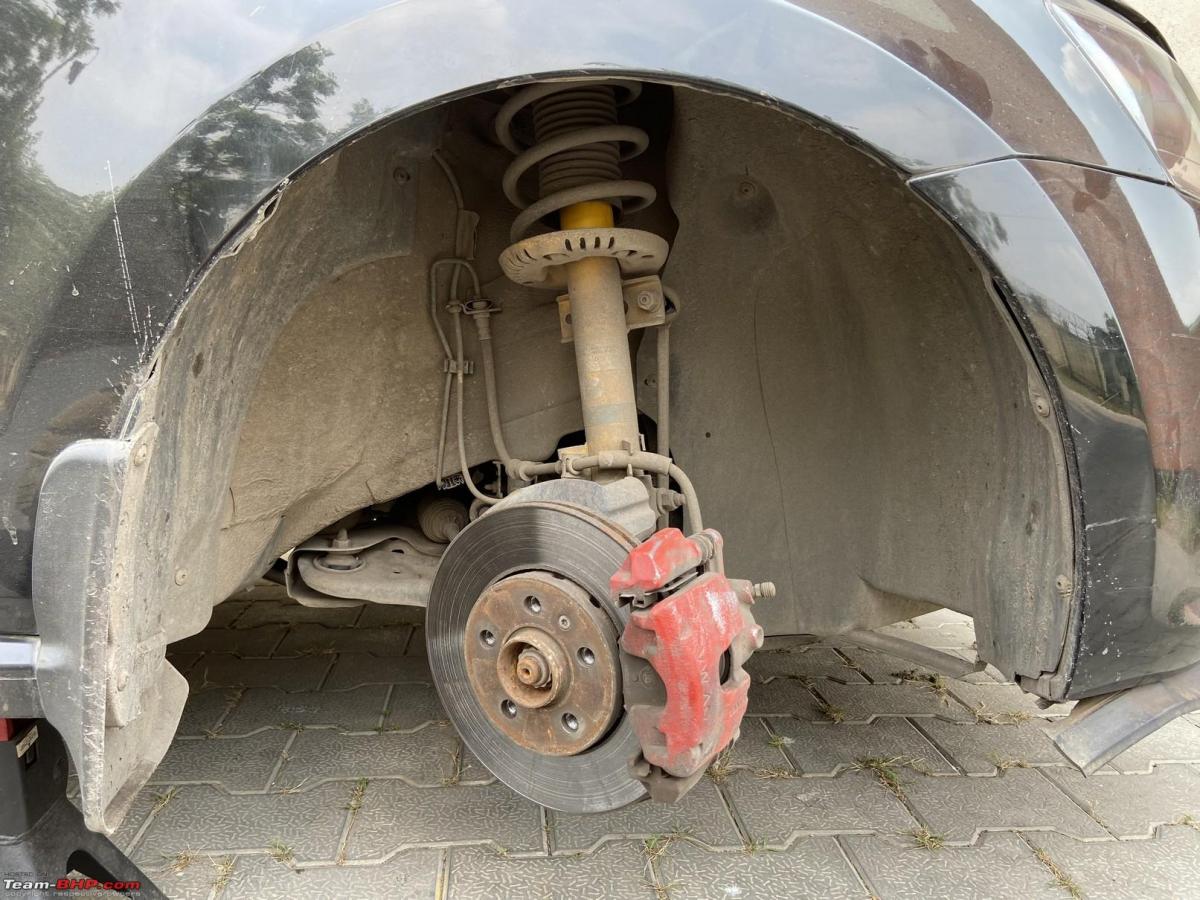
Place the wheel removed behind the jack stand for added security.
4. Rotate the steering wheel towards the extreme right to permit access to the calliper bolts from the wheel hub.
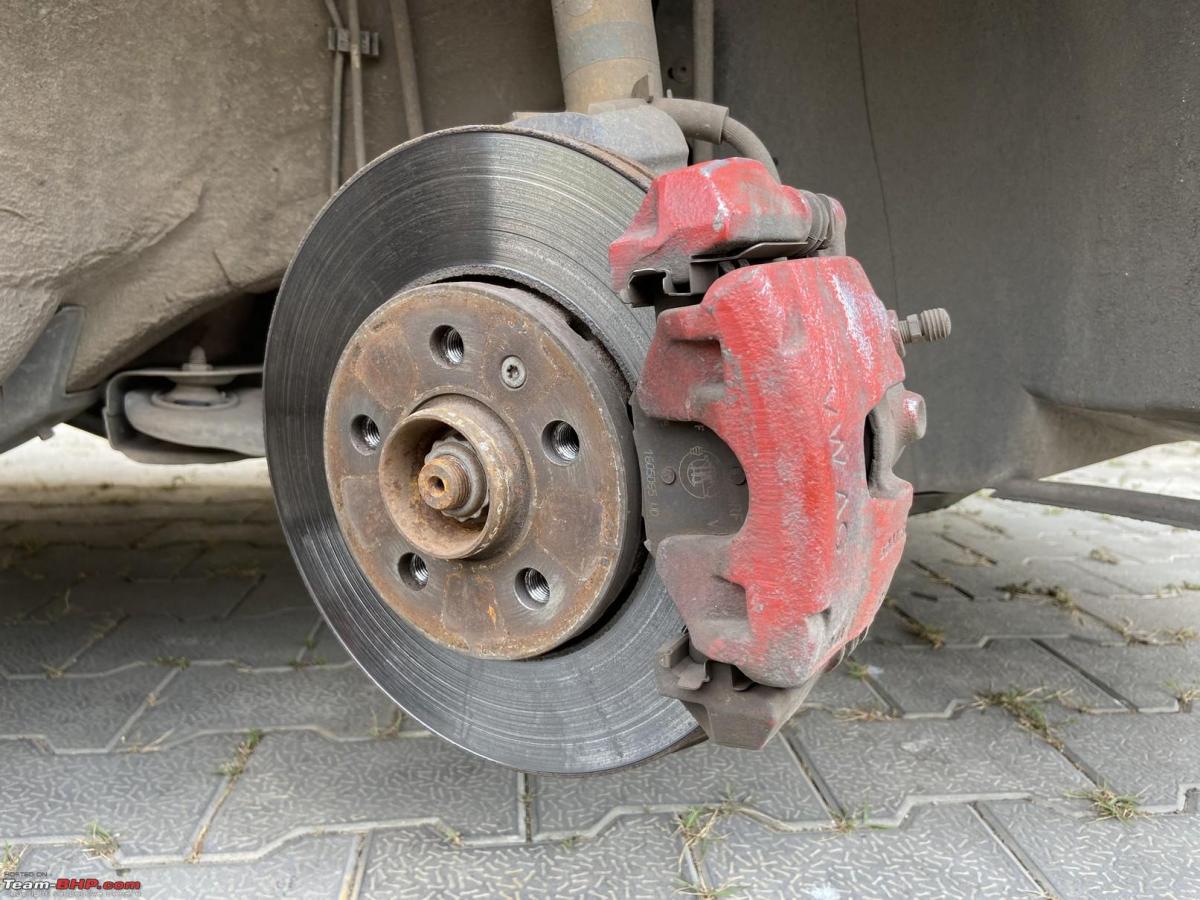
5. Clean the calliper assembly with the wire brush and the brake cleaner spray thoroughly. There’s bound to be plenty of brake dust and perhaps a bit of rust too.

6. Unscrew the cap of the brake fluid reservoir and keep the cap atop the outlet.
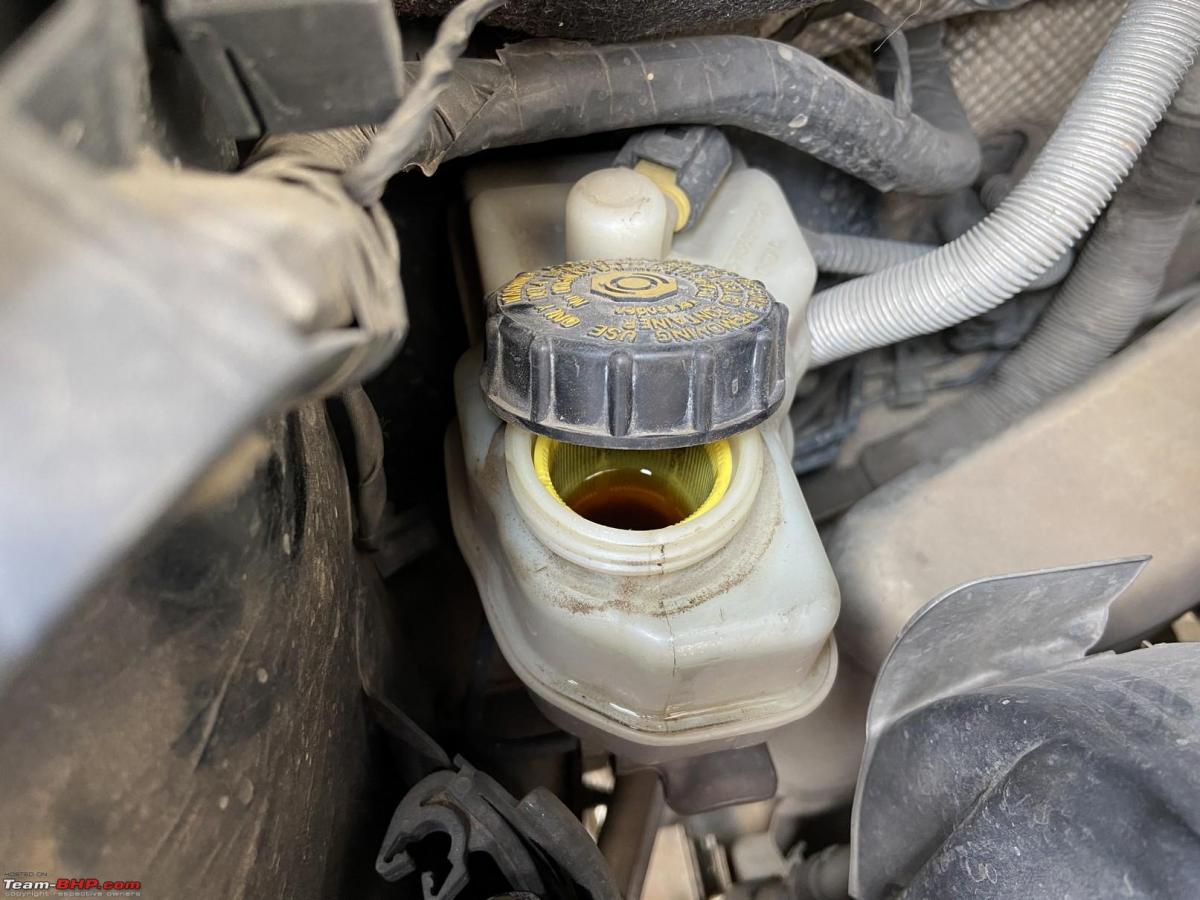
This is to permit the brake fluid to rise when the pistons from the callipers are pushed. Don’t keep the outlet for a longer time as brake fluid is hygroscopic and absorbs moisture from the air.
7. Use the flat-head screwdriver on the inside brake pad to push the piston back to the outermost position. Insert the screw driver here and push the piston back:

Or you can use the 6”/120 mm C-clamp and the old brake pad to compress the piston. /Lesson learnt #1.
When the piston is compressed, the brake fluid in the reservoir rises. When you do it for the other wheel too, it may spill out a bit so keep some rag clothes around the reservoir cap as brake fluid is highly corrosive.
Here’s how it is done with the C-clamp and the old brake pad:
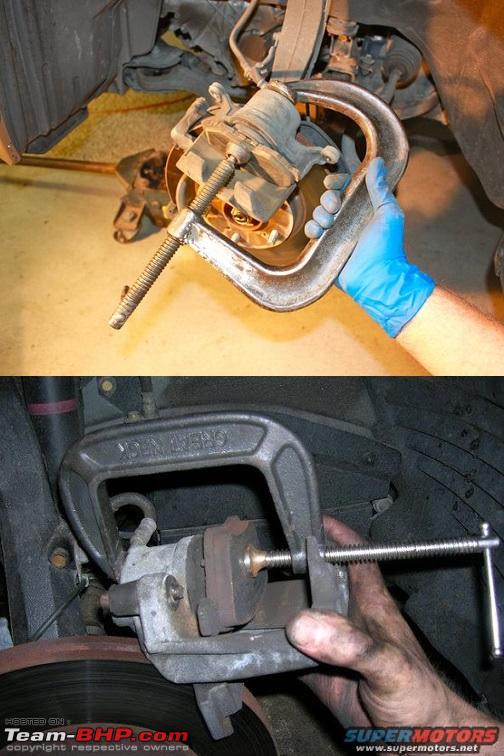
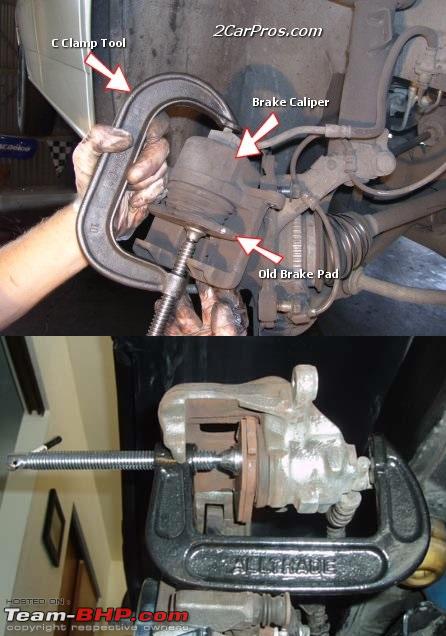
(Images from Google Images; copyright respective owners)
8. Undo the 2 hex. head bolts on the top and bottom of the caliper assembly:

9. Remove the caliper and hang it to the spring using the S-hooks:
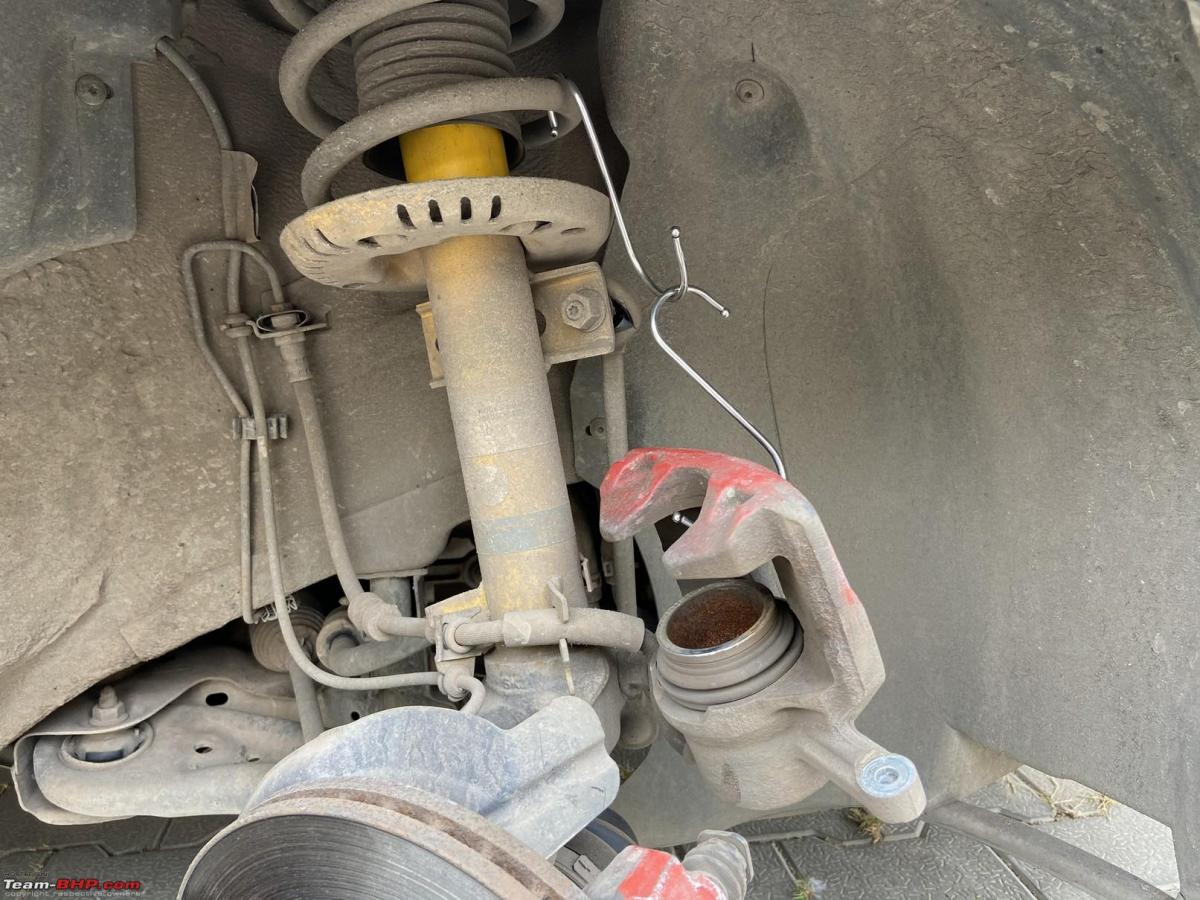
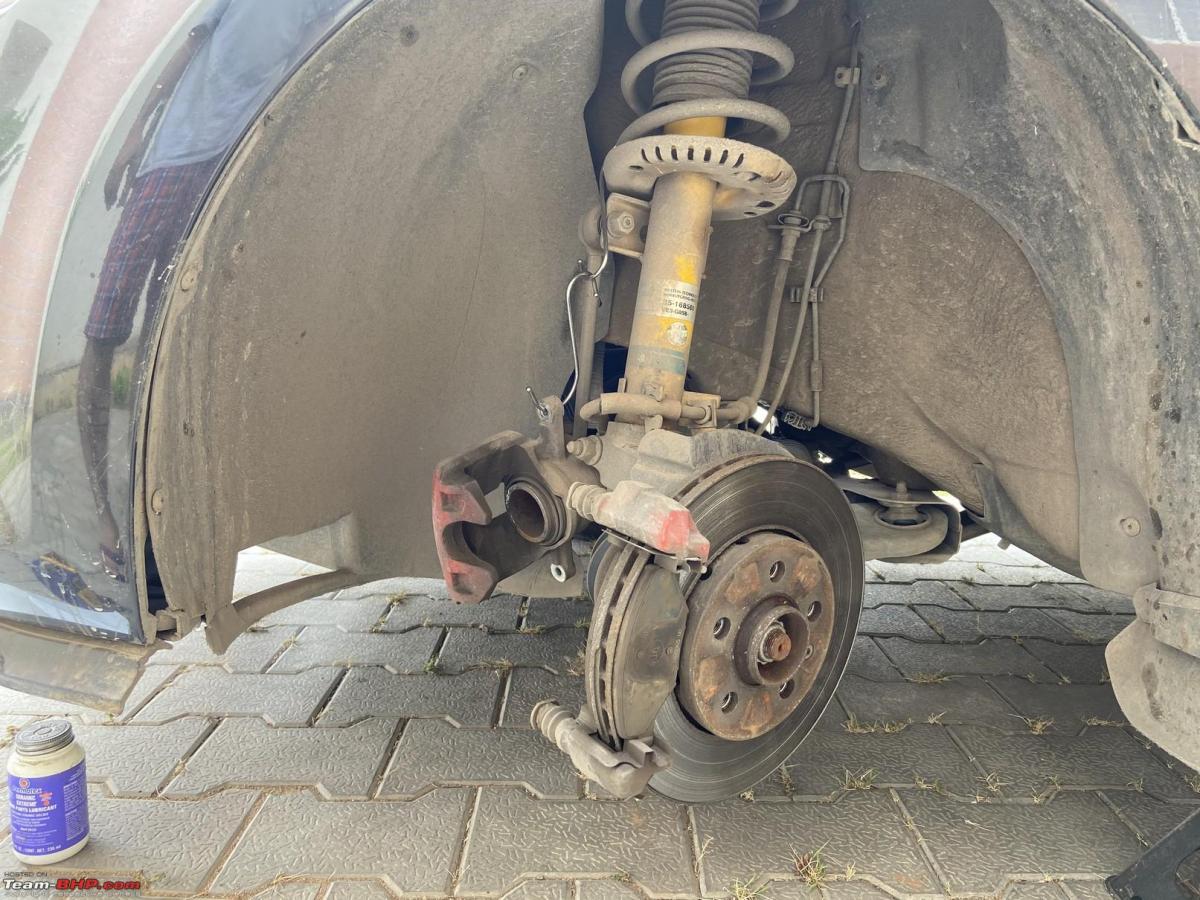
10. Slide the old brake pads out of the clips. They’ll slide out without any effort.
Check out the difference between the old and the new pads:

11. Clean the sliding clips using wire brush and the brake cleaner spray. Remove the bushes and the guide pins from the caliper bracket and clean them thoroughly.


One of the sliding pins had some pitting in them and was stuck inside the calliper bracket for a good time! We had to use some force to get it off. Look at the condition of the pin:

Can clearly see the pitting.
12. Apply the brake grease in the slide paths of the clips and the guide pins. If the rubber bushes of the guide pins are worn off or torn, you’ll have to replace them to prevent dust ingress on the pin. Bushes are dirt cheap. Inspect and replace as necessary. Replace the guide pins and the bushes into the bracket.
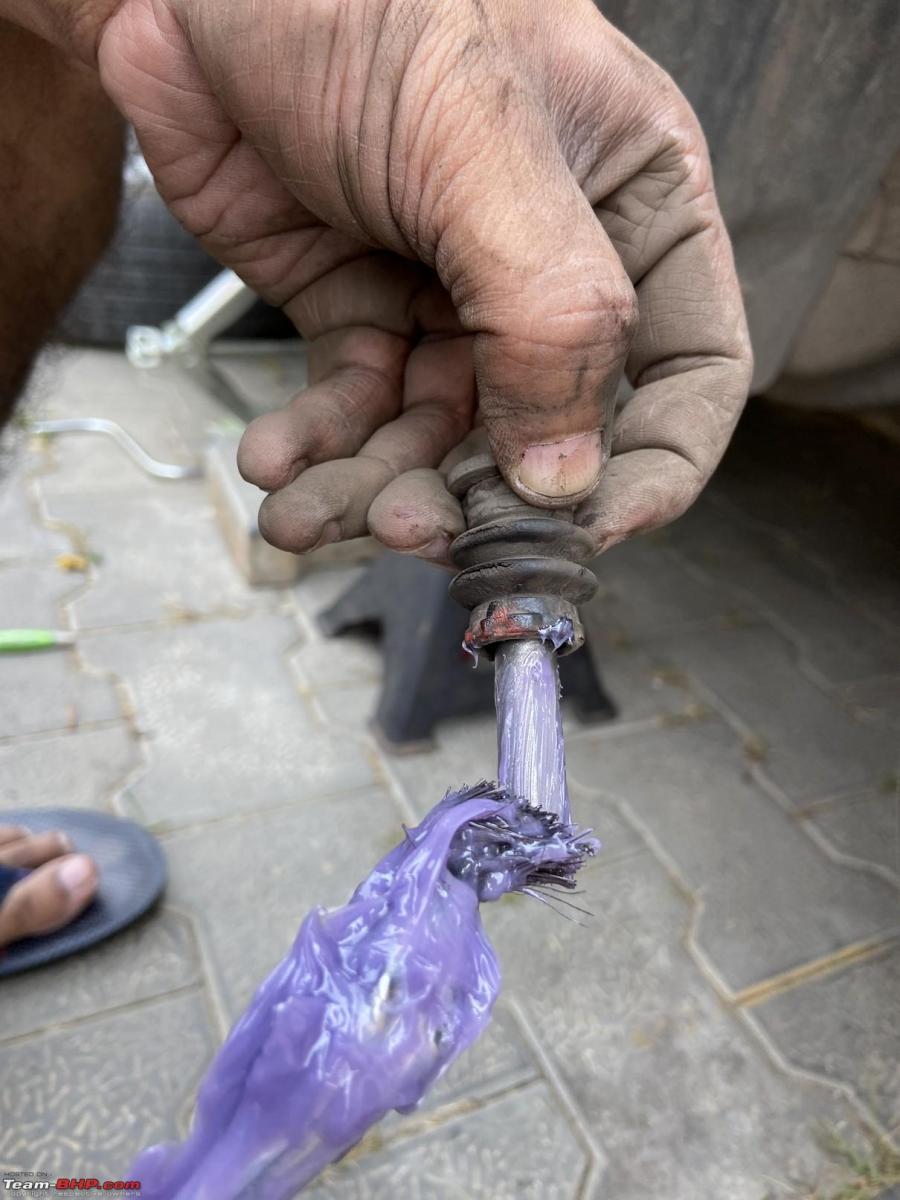
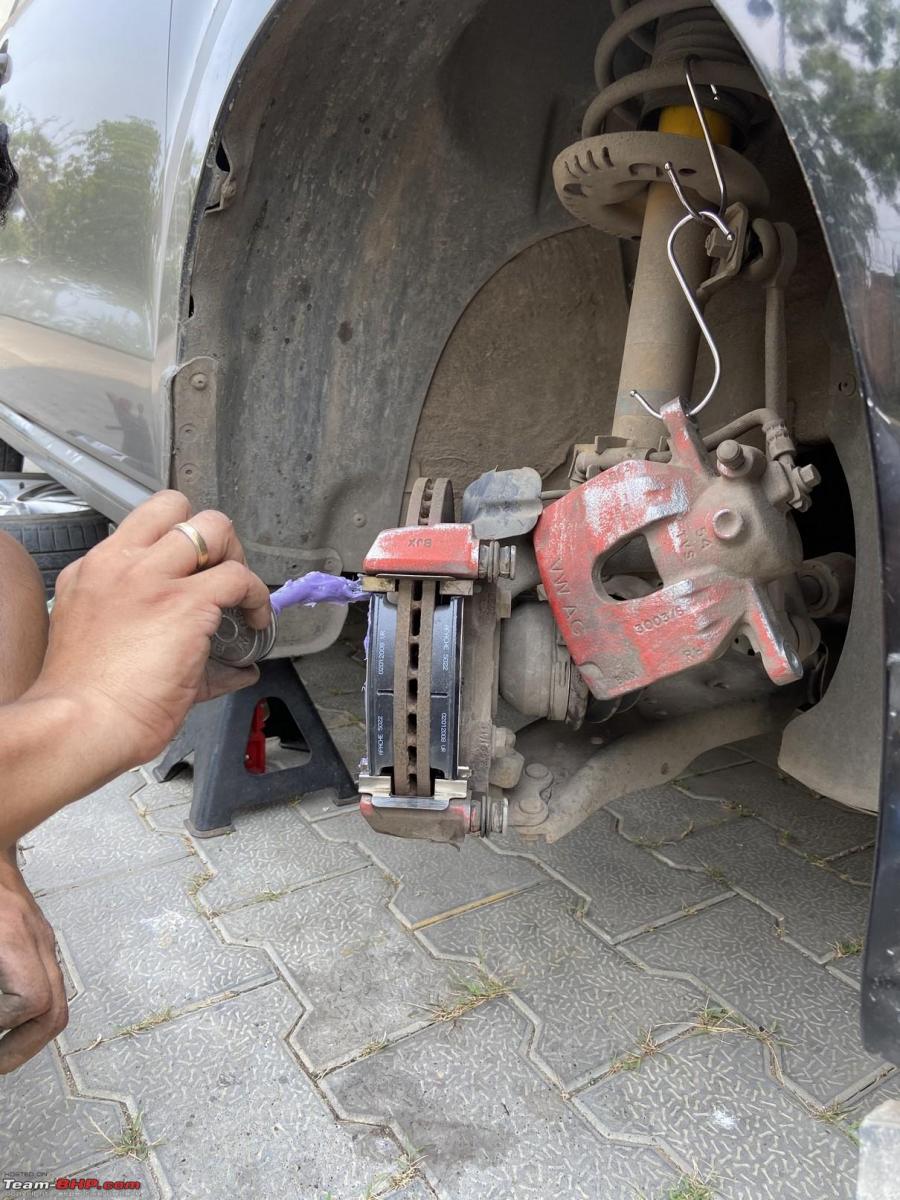
Be careful while applying the brake grease on the parts - the frictional surface and the discs should not have a speck of this grease! The mating surfaces have to be absolutely clear from the grease. Use the tissue paper and the brake cleaner to wipe off any grease on the surface of the rotors.
13. Insert the brake pads into the sliding clips on both sides of the disc. IMPORTANT - While inserting the brake pads, observe the INSIDE and OUTSIDE markings on the pads! Some set of brake pads have rivets on the inside while some have it on the outer ends. Where the rivets are located close to each other, these are the pads meant for the outside and where the rivets are located far away, these are the pads meant for the inside i.e. the piston side. The piston head has to mate flush with the metal surface of the pads. Lesson learnt #2.
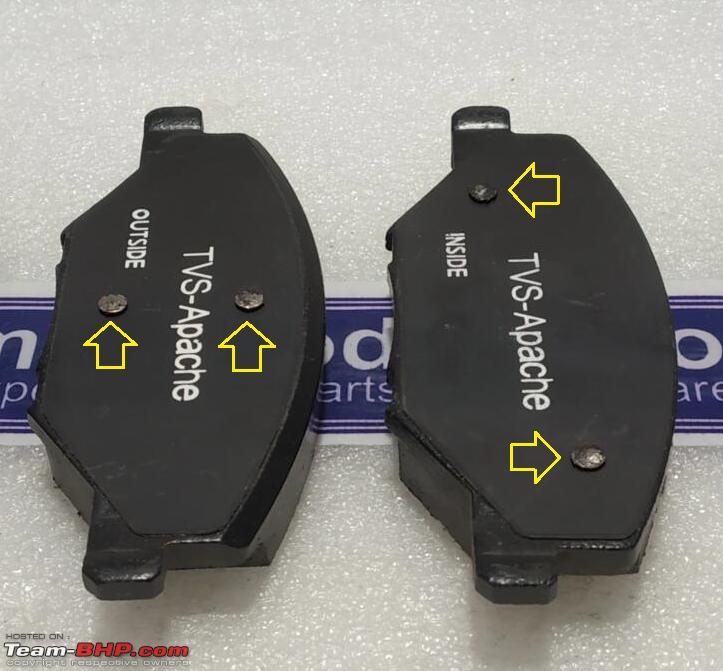
(Image courtesy - Boodmo)
Whereas some pads have no such distinction and they can be interchanged. Take a look at this set from Motherson:

(Image courtesy - Boodmo)
You can see that the rivets are located at the extreme ends and does not come in way of the piston head.
14. After the pads are inserted, apply some brake grease on the metal plate of the pads. Too much of grease is bad and too little would be insufficient. Just a small layer is sufficient.
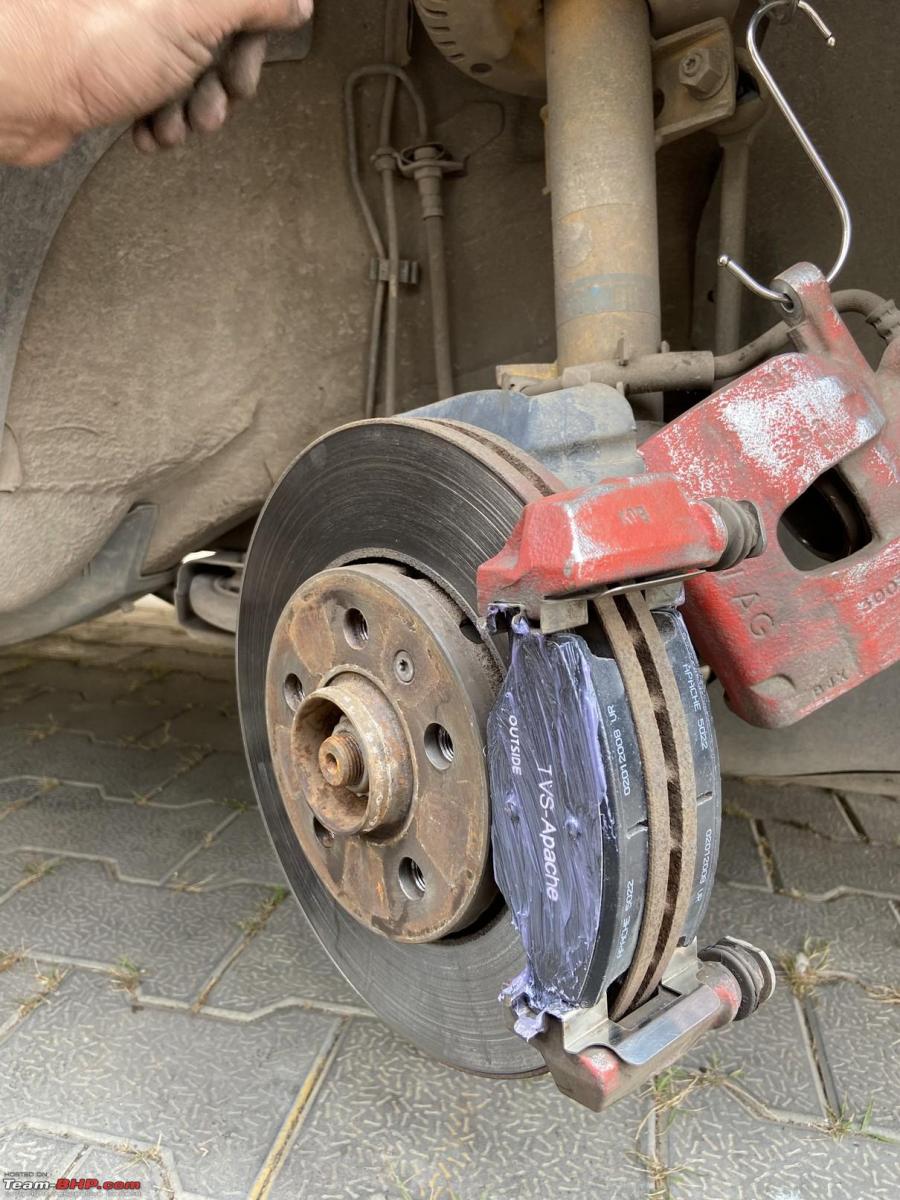
15. Replace the caliper back in place and secure the calliper to the bracket using the bolts. Tighten the bolts. I simply hand tightened it using the 1/4” ratchet. If you have a torque wrench, tighten the bolts to 35 Nm.
16. Rotate the steering wheel back to the centre so the wheel hub is centred and replace the wheel.

17. Redo the above steps for the other wheel.
18. Replace the brake fluid reservoir cap and close it firmly. If some fluid was spilled outside (likely when the piston on the second wheel is compressed), check the fluid level in the reservoir and top up if required. The level should not go below the minimum mark. Clean the surrounding areas of the reservoir.
19. Lower the car after removing the jack stands.
20. Before driving off, start the car and press the brake pedal to reduce the pedal play and let the respective pistons push the pads firmly towards the rotors. Do a short test drive to confirm the braking action multiple times.
Lessons Learnt
As I mentioned before, we ended up doing some mistakes during this DIY being the first time we were attempting this. Its all about the experience and we always learn something every time.
#1. Use a 6”/120 mm C-clamp or a larger size for compressing the calliper piston back. We messed up here because my puny 50 mm C-clamp was not sufficient for the job as the clearance was less. So, we had to resort to the flat-head screwdriver method. Needless to say, I ordered two additional C-clamps to my kit. Will come in handy next time.
#2. Pay attention to the INSIDE/OUTSIDE markings on the pads when you replace it on the calliper. We ended up installing the two OUTSIDE brake pads on the driver-side wheel and the two INSIDE brake pads on the co-driver side wheel! Just as we were about to wind up and replace the co-driver side wheel back into the hub, I saw the INSIDE marking on the brake pad!


Sigh! We had to trace back a few steps and redo it correctly.
#3. Carry some bottles of drinking water to keep yourself hydrated when you’re on the job. We didn’t and dearly paid the price for it! I am glad and very thankful to my partner Gagan who went to the nearby supermarket to fetch some cold drinks. The shade went away after some time and it was sunny where we were working. We were so damn exhausted at the end of it!
#4. Use a pair of latex gloves while doing this job. Our hands were really dirty at the end of the job and required extensive cleaning especially the nooks and crannies of the finger nails. A face mask will prevent brake dust/rust while cleaning with the wire brush from entering into the respiratory system.
I cleaned the discarded pads and painted it with two coats of spray paint. Using them as paper weights at work:

That’s all for now. The car’s odo stands at 167,800 km. I am figuring out some high beam issue on my headlamps as we speak. Shall post about that separately. Take care and stay safe!
Check out BHPian comments for more insights and information.
- Tags:
- Indian
- DIY
- brakes
- Polo GT TDI
- Polo
News
Caught between the Volkswagen Polo & Skoda Rapid 1.0 TSI
Now as I am getting more time to analyze my decision and at the same time reading all the Rapid and Polo reviews on the forum, I am wondering is it prudent to reconsider the Rapid given the fact that it is more practical car to live with.
BHPian thisissoumya recently shared this with other enthusiasts.
I am in market looking for our second car. This will share the garage with the Duster 110 AMT I currently own. I always wanted to own a Polo GT TSI and if VW still had the DSG, I would have gone for it eyes closed. However, the new 1L TSI is available with manual and TC. Went for TD and found the manual much more fun than the torque converter (even in sports mode). I am still not sure why this happened as many ownership reviews on the forum praise the new auto gearbox. The only issue with Polo was the rear space, it felt very cramped and my wife felt a little claustrophobic at the rear due to the high window line. This could also be due to the large windows of the Duster she is used to.
Next I went to TD the Rapid as it has the same motor with more space at the rear and larger boot. I was ready to stretch the budget marginally if Rapid provides similar driving pleasure as Polo. I took a 7-8 Km long TD. Though the outright performance was brilliant, I found the low end grunt of the Rapid MT annoying as compared to the Polo. I mean the turbo lag is noticeable in both the cars but I felt as if the Polo had more juice in the 1200-1500 RPM band which is much more drivable than the Rapid. The in-gear acceleration also felt sluggish in Rapid. Has anyone noticed this? I was looking for the ONYX model and the dealership also didn’t offer a good price so I dropped the idea without further negotiating.
I went back to VW Thane and booked the manual highline plus on 8th March. Post that. the SA kept telling me since that they don’t have Flash red in stock and they will only receive it in April 1st week when they get their allocation. I chased them again on 5th April and the response was to wait for another 3-4 days as they had not received allocation. In the meanwhile, the Lockdown in Mumbai was announced and everything is on hold till the restrictions are lifted.
Now as I am getting more time to analyze my decision and at the same time reading all the Rapid and Polo reviews on the forum, I am wondering is it prudent to reconsider the Rapid given the fact that it is more practical car to live with. I usually take at least 2 long road trips a year, which won’t be possible in Polo. Yes, I can always take the Duster but given the high speed manners of the TSI motor, it will be better one to take on a road trip. It’s the city drivability of the Rapid against Polo that I am concerned with along with the 2.5 big ones budget stretch. So, my question is should I reconsider the Rapid and how much is its incremental turbo lag vis a vis Polo? This point is really important as it will be my daily drive in moderate traffic.
I am not interested in the Rider variant and hence is it ok to stretch the budget by 2.5 lakhs and get the ONYX model as a second car or should I save it to replace the Duster (5 years old with 45K on ODO) when I do that in future? Just for the record, I don’t mind owning a 10 year old model as long as it is fun to drive with decent list of features.
Should I also take a look at the Rapid AT (budget will stretch further of course) to mask the low end lag? I read a few owners saying the AT is better to drive in city, on the other hand there are owners stating that city driving is just a matter of a learning curve. Just creating more confusion in mind.
Please suggest.
Here's what BHPian lamborghini had to say on the matter:
The Rapid Auto could be worth checking out as it would resolve some issues:
1) Lower end turbo lag would be masked by the torque converter gearbox
2) For moderate traffic in Mumbai, it could be worth the investment to get the auto for peace of mind: would be a good balance between fun to drive and convenience. However MT will be the enthusiast choice undoubtedly and if you're ok with changing gears - I'd put that aside for an auto option of whatever replaces the Duster and keep the Rapid as a fun choice.
3) As you rightly said, if your long trips see a lot of expressway & good roads, the Rapid will be much more fun to drive for 8 months / year (eg: Mahabaleshwar, Pune, etc.). The Duster will still be the choice during monsoons and where last mile connectivity is horrid (eg: Shillim, etc.). The Rapid would still do it but the Duster would conquer it.
4) Choosing trims: Depends on what you need. If its the cosmetic goodies like Alloys, spoiler, etc. : You could get the Rider and do it up; but if it's stuff that would involve opening up the car (dash / seats / electronics), I prefer OEM just because the quality & finish is generally better (no rattles, no scratches, etc.).
As an option, how about the slower selling Vento? Do give it a try. The same dealer may be happy to upgrade and offer you a deal. Do check with other dealers as well for their best offer.
I personally found Skoda service to be better than VW but not a huge difference, all boils down to getting a good SA.
Here's what BHPian pvivek2 had to say on the matter:
You might find the answer to Polo/Rapid, in the exact need/purpose for the second car - is it intended for use by another family member/or as a pure enthusiast choice etc. Given that you mentioned that at least a few road trips will be taken in the TSI, then it's Rapid hands down for the more practical rear space and the boot.
On the other questions,
(1) Will leave that to the experts, since I haven't driven the Polo extensively
(2) Yes, the Onyx makes more sense - for me where it scored significantly over the Rider was steering mounted controls, the 16" clubber alloys, DRLs, the leather wrapped flat bottom steering wheel and the touchscreen infotainment (though this comes in Rider Plus also). And not to mention, there will be zero discounts on Rider and Rider Plus while Ambition/Onyx are usually flush with discounts during quarter/year ends.
(3) I came from an NA petrol to my first ever turbo engine and thus felt the lag initially in my Onyx AT, but after 4000 km now, I can safely say that this is not an issue - I find the car equally comfortable to drive within the city (the convenience of the auto gearbox in Bangalore traffic is a savior actually). Though of course the fun is on the highways.
Definitely do TD the auto gearbox once.
Check out BHPian comments for more insights and information.
News
Enthusiasts' pick: VW Polo GT TSI AT or Hyundai i20 Turbo DCT
The i20 has seen two-generation changes in between and the Polo has been kept flogging on with the same PQ25 platform.
BHPian sidindica recently shared this with other enthusiasts.
As we see, these 2 hatches are the ones available which are fast as well as fun.
Prices (non discounted, ex-showroom, taken from the websites):
Polo AT
- Highline plus AT: 9,60,000
- GT TSI AT: 9,99,000
i20 Turbo GDI DCT
- Asta: 10,68,100
- Asta dual tone: 10,83,100
- Asta O: 11,19,100
- Asta O DT: 11,34,100
Now, both these cars are evenly matched (or close to evenly matched) in performance and Hyundai's new i20 also has the dynamics to match the performance. The i20 has seen two-generation changes in between and the Polo has been kept flogging on with the same PQ25 platform.
I20 has space, features, service network and resale advantage in its kitty and the Polo plays in its tuning potential.
In today's times, should an enthusiast pick up the i20? or the evergreen GT TSI continues to be a torchbearer?
PS: Only we are comparing fast automatic hatchbacks, no manuals here.
Here's what BHPian tanbeamer had to say on the matter:
Truth be told, the Polo has become too old and desperately needs a new generation. It is no longer the premium hatchback that people aspired to own back in the day. Since I cannot vote here, the i20 Turbo DCT is going to be the pick for me.
Not to mention, the i20 Turbo has better space optimization as well. So its one up over the polo here as well.
My opinion might change if VW India manages to bring the MQB based Polo to India soon. But for now, the Korean hatch it is for me.
Here's what BHPian AMG Power had to say on the matter:
I don’t know what you mean when you say evenly matched as the Polo GT TSI is a whopping 1.5 seconds faster to 100 kmph than Hyundai’s 1.0 GDI 7 DCT.
The PQ25 platform is it’s single largest strength. Every successor platform made by VW, especially the notorious MQ***, is a compromise and feels that way. Drive the 1.8 TSI Octavia - the Polo is more stable. So if you’re looking for a competent platform, grab this while you can. The new ones will not be as good as this ever again.
Here's what GTO had to say on the matter:
Hyundai has drastically improved its suspension tuning. The new i20 has sorted road manners, while I would actually call cars like the new Creta 1.4 turbo-petrol to be "fun to drive" on the open road. Who would've thought??? That being said:
- As amazing as Hyundai's turbo-petrol is, VW's motor is a little more insane, revv-happier and redline-friendly.
- The Polo's behaviour still has a maturity that the i20 doesn't have. Try a mid-corner bump at 90 kmph in both cars. I voted for the Polo.
- If you want a fun-to-drive Hyundai hatchback, consider the Grand i10 Turbo instead. Man, now that's a pocket rocket! Distinctly tighter & more chuckable than the i20. Heck, the Aura too! I came back from a highway drive in the Aura 1.0 Turbo and had a wide plastered on my face for the rest of the day.
Check out BHPian comments for more insights and information.
- Tags:
- Indian
- Volkswagen
- Polo
- Hyundai
- i20
Pages




